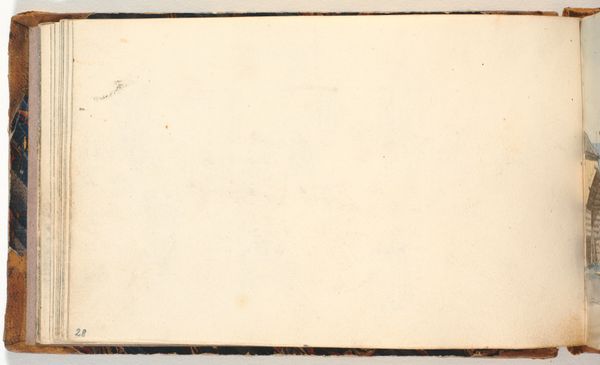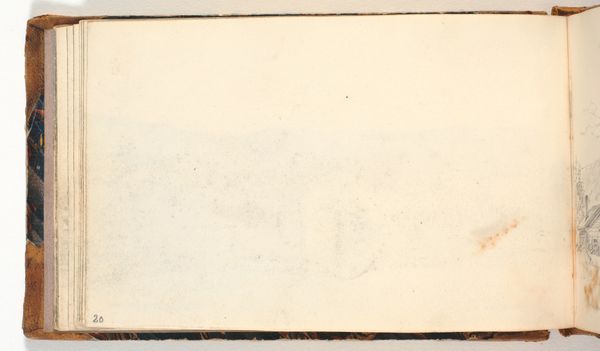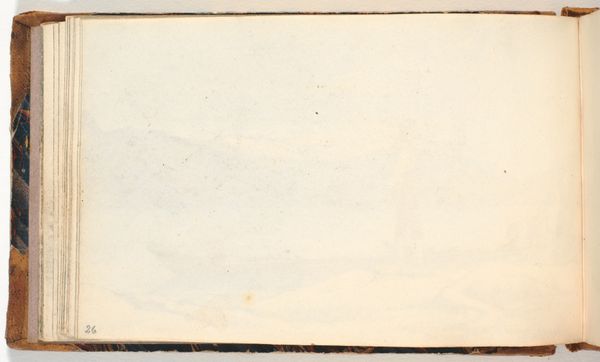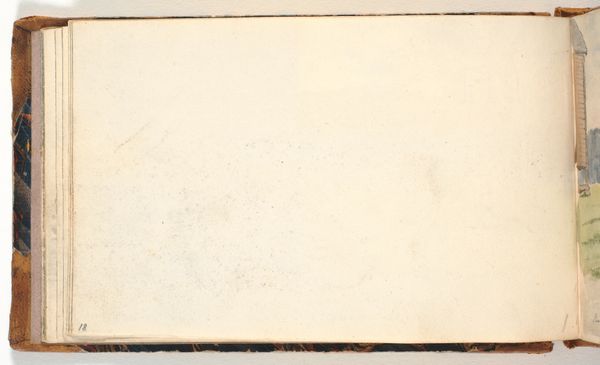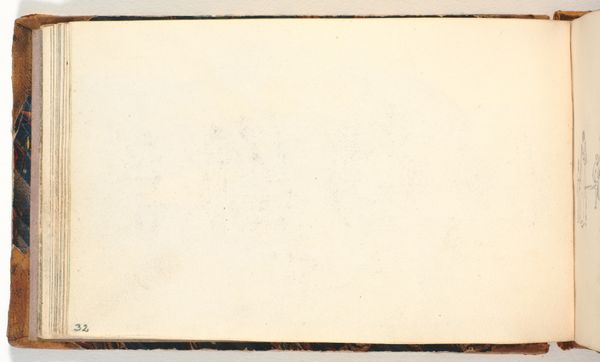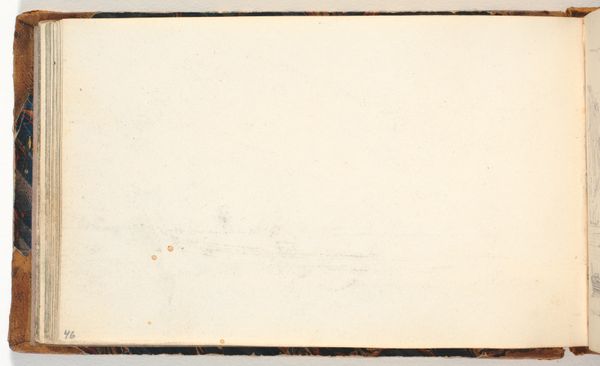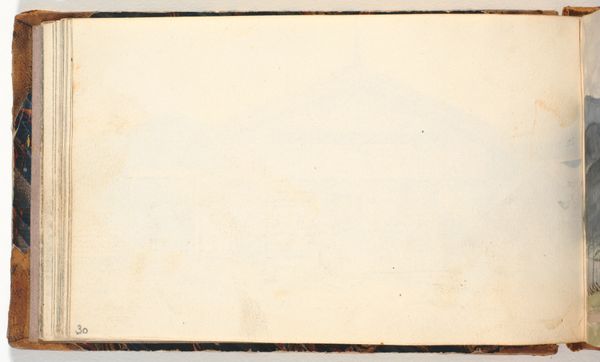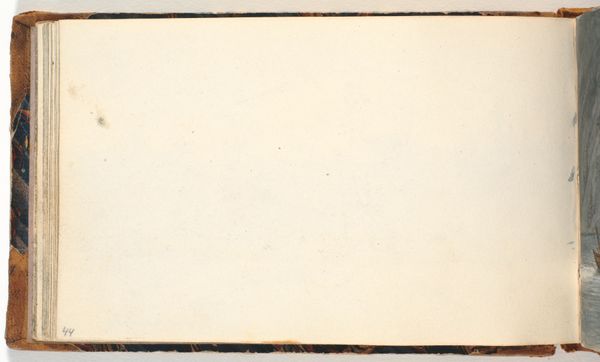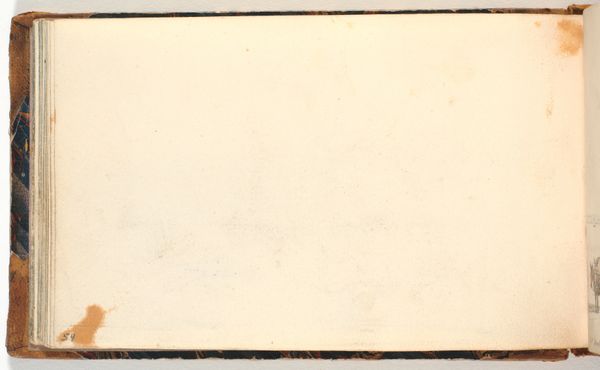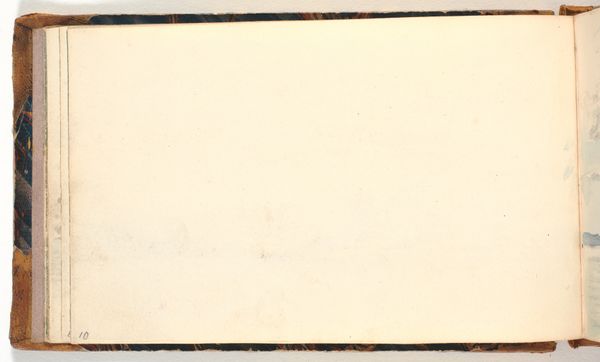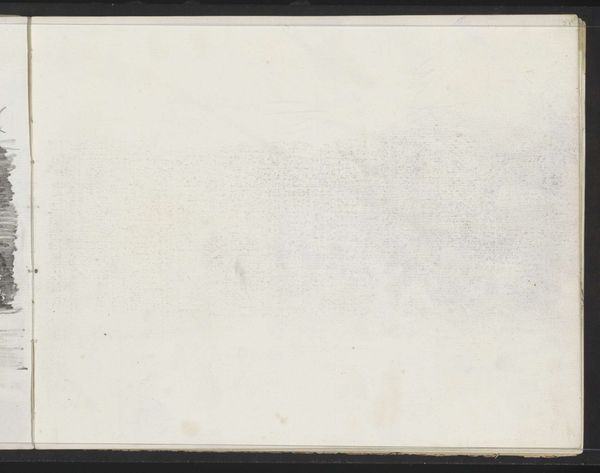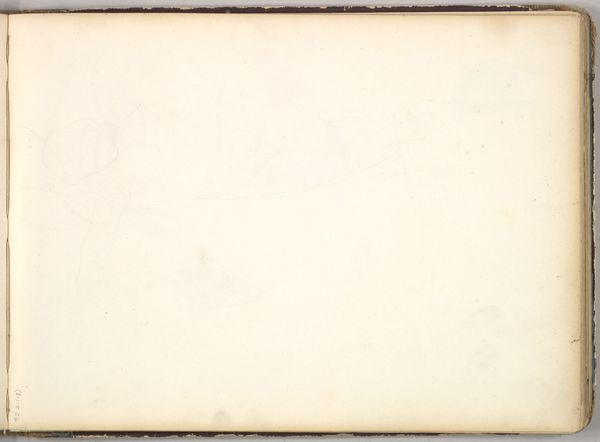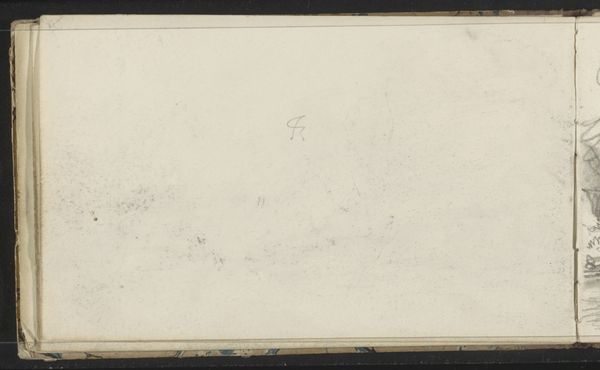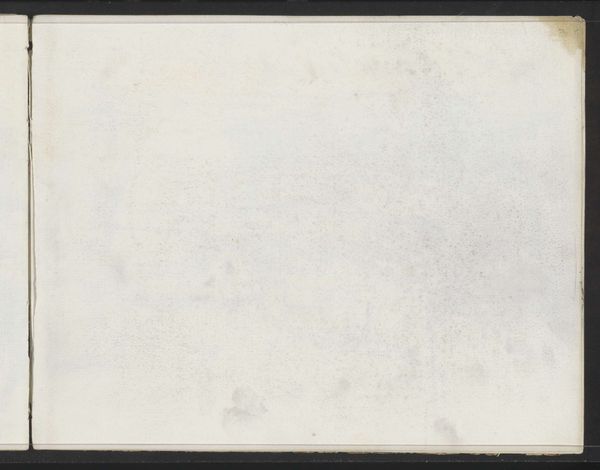
drawing, paper, pencil
#
drawing
#
paper
#
coloured pencil
#
pencil
Dimensions: 107 mm (height) x 179 mm (width) (bladmaal)
Editor: So, this is "Blank" by Martinus Rørbye, dating back to 1832. It’s a drawing in pencil and coloured pencil on paper. It’s just… a blank page! It makes me wonder about the intent. Why preserve an empty page? What do you make of it? Curator: That’s a fascinating question. An empty page, especially within a sketchbook context, speaks volumes. Consider the cultural history of sketchbooks in the 19th century. They weren't simply for preparatory sketches. Often, they served as travel journals, status symbols. Was this left blank intentionally, perhaps signifying a moment of artistic block or a deliberate pause during travel? Or was it maybe supposed to be used for a portrait commission that never happened, reflecting perhaps on a fragile social connection that broke apart? Editor: I hadn’t thought of it that way. So, the "blankness" itself becomes the content, representing social or artistic… failure, almost? Curator: Precisely. It's crucial to think about how institutions – even then – shaped the artist's journey and what was considered worth preserving. Rørbye was documenting his travels but the "Blank" page becomes a commentary on the limits of what could, or should, be captured or displayed to the public. What are the unspoken limitations? It is almost poking fun at a very important and elitist process, don't you agree? Editor: Definitely. It's like he's saying, "Here's what I *didn't* find, what I *couldn't* capture, maybe what wasn't "interesting" enough." Curator: Exactly. The politics of imagery extend to what remains unseen. It makes you think about the selective nature of historical narratives. Editor: I never thought a blank page could be so…loaded. It challenges the whole idea of what’s considered art. Curator: Absolutely. Hopefully it provides us all some food for thought!
Comments
No comments
Be the first to comment and join the conversation on the ultimate creative platform.
